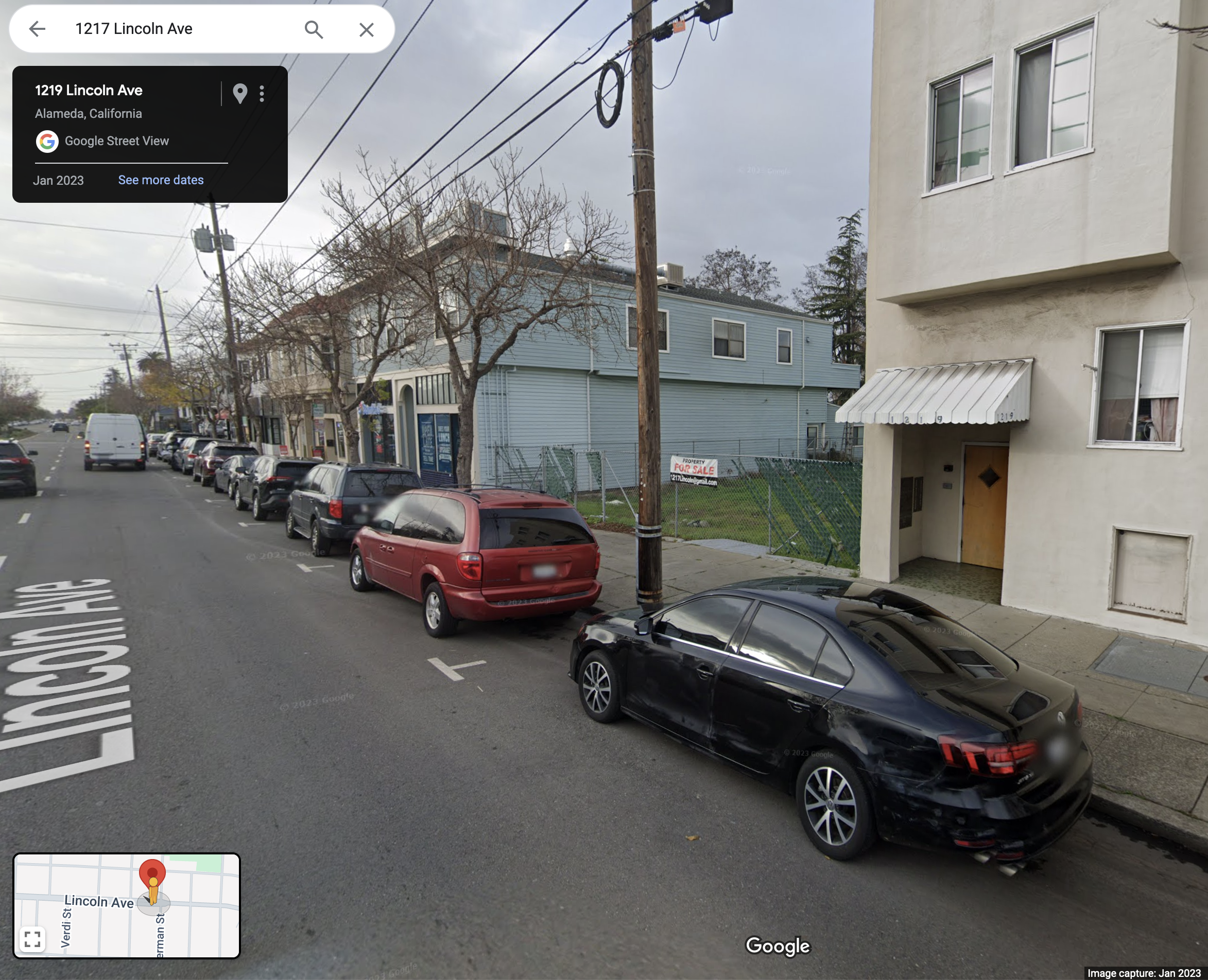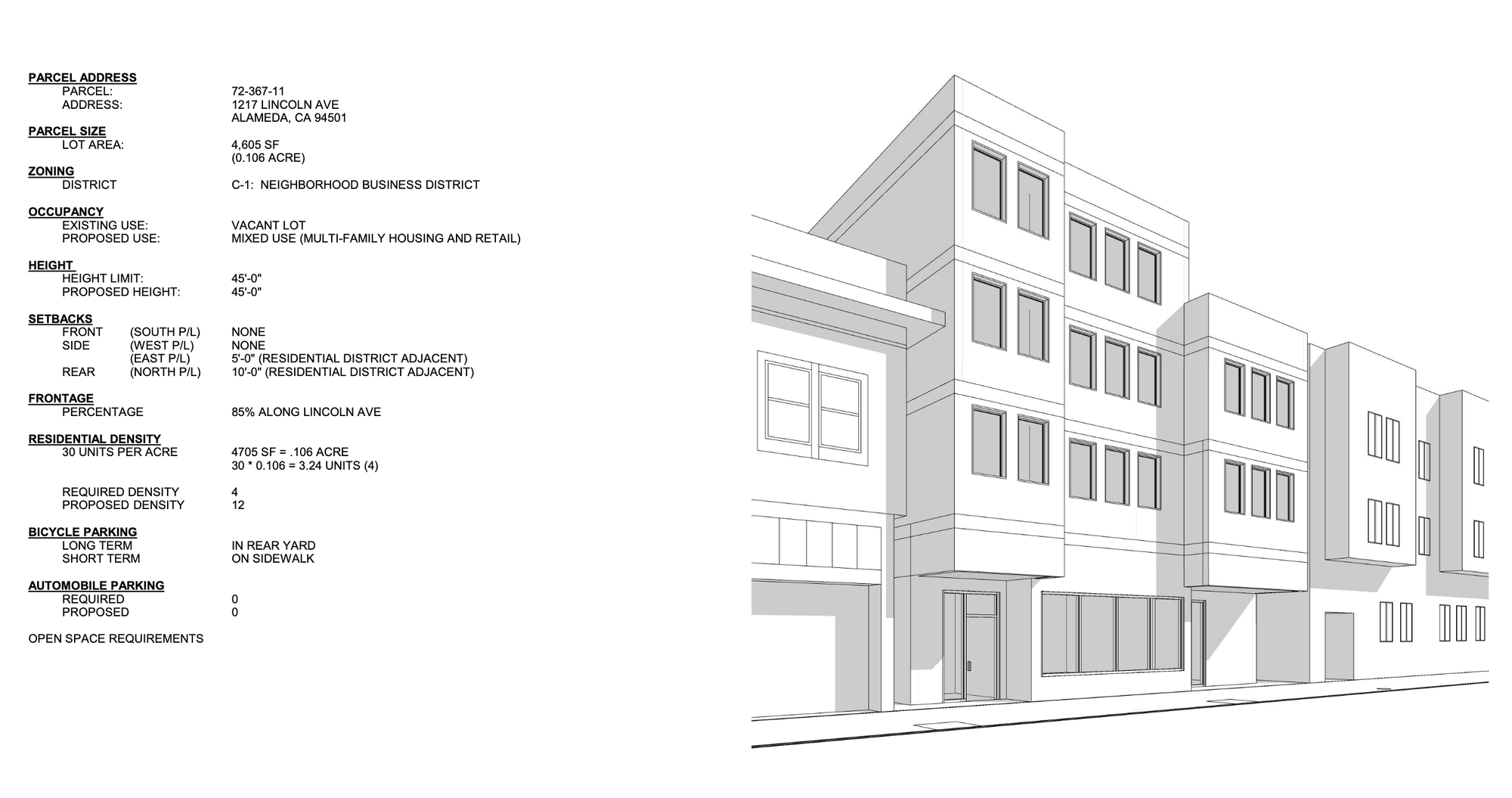Opponents of housing spoke in dire terms on November 15, 2022, as Alameda City Council held a final hearing and prepared to vote on adopting zoning code changes that had been refined in many meetings over the previous two years. If adopted, the amendments to the city's zoning code would meet mandates from the State of California — the zoning changes would make Alameda the first Bay Area city to have a compliant Housing Element under the state's new regime that actually promised penalties to recalcitrant localities. But even after 2 years of public meetings to refine the changes, some public speakers still opposed any and all change. To quote minutes from that meeting, public speakers:
- "Stated that she is strongly opposed to the blanket upzoning and the expansive transit overlay; expressed concern over adverse consequences that may result in such a drastic decision and over the loss of green spaces and trees; stated open areas are essential to the health and well-being of residents"
- "Expressed opposition to the upzoning of older, established neighborhood, including historic and commercial districts"
- "Expressed concern over staff attempting to change history and the will of the voters; stated that he can divulge what he likes during public comment; the matter is an aggressive land grab by developers and is attempting to destroy the City; urged Council to oppose the matter"
Alameda passed the political stress test and adopted its Housing Element and the proposed amendments to the zoning code that evening in late 2022.
It's now 15 months later and we can finally start to see some of the effects of the zoning code changes. The effects are modest additions of housing into the existing urban fabric of Alameda. The fact that the effects are so few and so small are, in part, the result of high interest rates. But also, this is by design — the zoning code amendments were crafted by city staff, consultants, and advocates to enable modest but meaningful increases in residential density throughout many areas of Alameda.
Two recent projects exemplify the zoning code changes:
Small mixed-use buildings with no off-street parking in existing business districts
I've been writing recently about bad news along Lincoln Ave — now for some good news: an empty lot at 1217 Lincoln Ave is going to be turned into a small mixed-use development. Here's the lot in its current form:

On one side is a Domino's pizza, across the street is an independent video game store, kitty-corner is a tiki bar...
I previously wrote about how Forbidden Island, the tiki bar, has been able to convert its outdoor space from off-street auto parking to an expanded patio for patrons, thanks to Alameda's zoning code.
Thanks to that same zoning provision, the new building proposed for the empty lot at 1217 Lincoln Ave will dedicate all of the land to housing and retail. There will be zero off-street parking spots constructed. This has multiple benefits: more space for more residential units, lower costs for the residential units that are constructed, and a continuous sidewalk frontage for pedestrians — no curb cuts with motorists driving in and out of the building.

The project will produce 12 residential units, 2 of which will be accessible to residents with limited mobility. (The applicants are requested a waiver to place the 2 accessible units on the ground floor, behind a small retail space that faces the sidewalk.)
This proposal to turn an empty lot into 12 housing units utilizes:
- the removal of Alameda's "parking minimum" requirements in 2021 by a majority of Alameda City Council
- November 2022 changes to the "C-1" Neighborhood District zoning (which applies to many of Alameda's small business districts known as "the stations," since many of them used to be stops along the island's east-west rail lines)
- November 2022 creation of "Transit Oriented Housing Waivers," which promotes the creation of small residential units for rental or sale within a short walk of public transit
Transit Oriented Housing Waivers only apply to the R1 - R6 residential zones. (More on this in the next example.) The applicants for this project on Lincoln Ave proposal using some of the waiver's parameters in this project, as it is also within a 1/4 walk of a frequent transit bus stop (on nearby Santa Clara Ave).
It will be interesting to see how this proposal proceeds. From my perspective, it's exactly the kind of project that Alameda has been seeking for these "station" business districts: a small active retail space on the ground floor; multiple units of housing above; some wheelchair-accessible housing units; and fitting all of this into an appropriately sized building.
Lincoln Avenue is a wide boulevard – which has the downside of promoting unsafe driving, but also has the upside of being an ideal location for a four-story mixed-use building.
A single-family Victorian in R1 (only) adding an ADU
The 2022 zoning code changes riled up so much opposition, in large part, because the changes affected the "R1" zone. R1 is the white area of this map:

At the start of 2022, the Alameda Municipal Code called the "R1" zone the "One-Family Residence District."
By spring 2022, Alameda City Council had voted to rename the "R1" zone the "One-Family and Two-Family Residence District" — this change was required by the state, specifically by Senate Bill 9:

By November 15, 2022, the City Council has revising the name — and the substance — of this zone again. Henceforth, it would just be the R-1 District.

While at the start of 2022, Alameda's zoning code mandated that each lot in the R1 zone be large and only hold one single house for one single set of residents, by the end of 2022, the R1 zone allows — under certain circumstances — "unlimited density"!

The Transit Oriented Housing Waivers (called "Transit Overlay" in the above table) is one of the keys to unlocking "unlimited density."
This — feared some of the public commenters on November 15, 2022 — would lead to sudden and serious changes to some of Alameda's most pleasant residential neighborhoods (the White — err, white — parts of that zoning map).
When the following property was listed in mid 2023, I watched to see what would happen. It's located in R1, where the Transit Oriented Housing Waiver applies, and it's exactly the kind of house the NIMBYs — err, preservationists — of Alameda fear is most endangered by the new zoning reforms:

Here was the MLS listing (with my own underlines for emphasis):
This exceptional East End Victorian beauty is listed on the Alameda Historical Building Registry as one of Alameda's vintage architectural jewels. Built in 1876, this elegant home, with its stunning Victorian exterior, boasts 2736 SF and features 4 bedrooms and 2 bathrooms. You get the best of both worlds with its vintage pedigree and modern conveniences. Vintage features include moldings, high ceilings, original hardware and light fixtures with ceiling medallions. The upstairs features a large living room, dining room, 2 bedrooms, a full bathroom and an updated kitchen with a commercial stove. The downstairs was expanded with the new foundation to include a family room with French doors leading to the large backyard, a full bath, 2 large bedrooms and a utility room with laundry hookups. Located on a massive 7,896 SF lot, the garage currently offers storage, a workshop and parking for 2 cars but it could be converted to a fantastic ADU! There is additional off street parking as well. This great East End Alameda location is currently one of Alameda’s slow streets and has easy access to freeways, BART and the Harbor Bay ferry. Close to downtown Park Street’s entertainment, fine dining and Alameda’s great schools, this is an exceptional opportunity for Victorian home lovers!
The main thing to note is the "massive lot." As this parcel is located in the R1 zone, SB9 allows splitting the lot into multiple. The Transit Oriented Housing Waiver applies and opens the massive lot to "unlimited density."
It's not truly unlimited, as various setbacks still apply. Plus, inclusion on the Alameda Historical Building Registry constrains what can be done to the main building itself.
But the question was open... what would the new owner do with this property and its potential under the post-2022 zoning code?
Turns out, not that much.
There's currently a small sign in front from Alameda Tiny Homes. The new owners got a permit for adding a single backyard ADU (an accessory dwelling unit) of 800 square feet.
This will add one new unit of housing to Alameda's East End, within a short walk of downtown Alameda and public transit.
This property is merely a sample size of n=1, but I think this is still representative of what's happening across the R1 zone: People with sufficient money to afford a house in this area are buying a house to live here. They're now also provided with some more flexibility to add a rental unit or a unit for extended family. But these zoning code changes didn't suddenly change their calculus. They didn't change into real-estate developers looking to realize the full realizable density on their lot.
I occasionally ask city staffers if SB9 has been used in Alameda. (SB9 is the early-2022 change to the R1 zone that I mentioned in passing earlier.) I recall at least one public commenter in late 2021 worrying that residents-turned-developers would be lined up at Alameda City Hall on the first business day of January 2022, with paperwork in hand to use SB9 to divide their lots into many more smaller lots — and a similarly large number of small housing units. SB9 has been on the books in Alameda for 2 years now and it's been used a total of zero times to date. When I asked most recently, there was potential interest from a single applicant to split a single lot in the R1 zone into two lots for two houses.
Based on my layperson's understanding of the zoning code, the new owners of 1337 Versailles could have used SB9 to split their lot into at least two pieces and to build some more housing on the rear piece. But they apparently chose not to.
Maybe they like having a generous backyard, side yard, and driveway.
Maybe they don't need the money of selling off land or renting out multiple housing units.
Maybe they don't have the money needed for such a large project.
Or maybe just building a small ADU in the rear that they can rent out as they wish is the kind of flexibility that they desire.
The dire predictions of the naysayers aren't coming to pass. The R1 zone looks much as it did two years ago. The changes are extremely minimal and gradual.
To some extent, this may be factor of high interest rates. Maybe things will change in coming years.
To some extent, this is also a warning sign that Alameda may need to take more measures to more actively encourage infill housing in future years to truly meet the goals of Affirmatively Furthering Fair Housing by providing more housing in the city's high-resource neighborhoods.
But for now, the 2022-era of zoning code changes are working as intended, as represented by this proposed infill multifamily project in a small business district along Lincoln Ave and this ADU behind an historic Victorian house on a Slow Street on the East End.